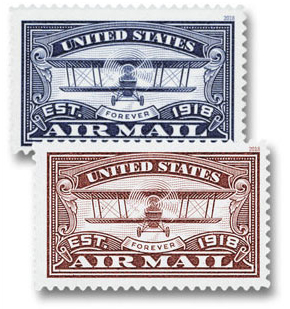
# 5155 - 2017 First-Class Forever Stamp - Love Series: Airplane Skywriting "Love"
2017 47c Love Skywriting
There are two types of skywriting: traditional and skytyping. Both forms feed paraffin oil through the plane’s exhaust to create a trail of white smoke. In traditional skywriting, the release of oil is controlled by a switch in the plane’s cockpit. For skytyping, a computer controls when the smoke is released.
Traditional skywriting requires a specially trained pilot. They create a detailed flight plan with the letters written in reverse. Each maneuver is precisely timed so the message is legible on the ground. Skytyping is faster and easier, but less elegant. Five planes fly in parallel lines, releasing puffs of smoke to form the message. Unlike traditional skywriting, skytyping consists of broken dots instead of solid lines.
Today, people stop in their tracks to watch skywriters at work. Whether it be a simple advertisement, personal message, or even a marriage proposal, skywriting is a rare and awe-inspiring art form. It brings joy and wonder to all who witness it and lends a little magic to the everyday.
Printed by: Banknote Corporation of America
Method: Offset, Microprint
Self-Adhesive
First Commissioned Female Airmail Pilot
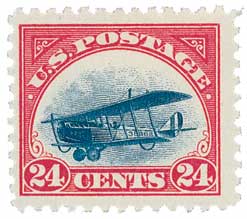
On May 23, 1918, Katherine Stinson became the first woman hired by the post office to deliver airmail in the US.
Born February 14, 1891, in Fort Payne, Alabama, Katherine’s family played an important role in early aviation. Her brother Eddie was an airplane manufacturer and her family ran a flight school.
In 1912, at the age of 21, Stinson became just the fourth woman in the country to earn her pilot’s license. The following year she became the first woman to carry the US mail when she dropped mailbags over the Montana State Fair. Her sister Marjorie also flew an early experimental airmail route in Texas in 1915, for which she is sometimes considered the first female airmail pilot.
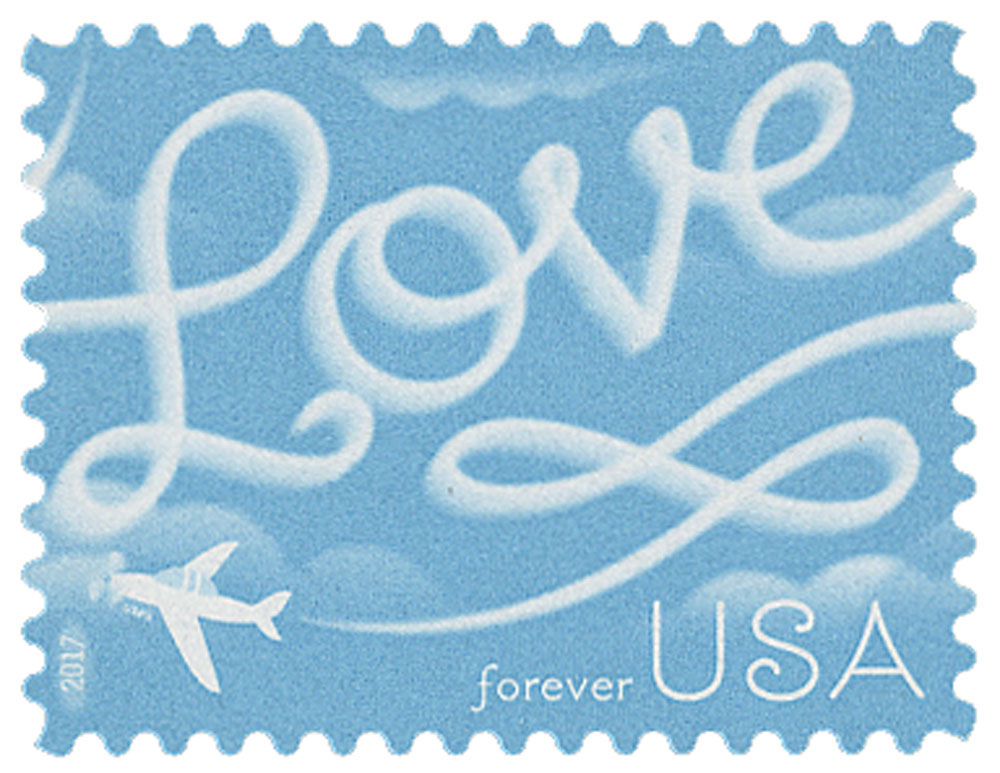
Katherine Stinson became known as the “Flying Schoolgirl” and earned widespread attention for her daring aviation feats, earning up to $500 per appearance. In 1915, she became the first woman to perform a loop and created the “Dippy Twist Loop,” a loop with a snap roll at the top. Stinson also performed tricks at night, using flares attached to her plane’s wingtips. She was the first person, man or woman, to fly at night and the first to perform night skywriting.
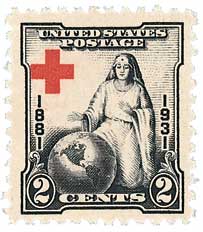
Stinson tried to serve as a combat pilot during World War I, but was denied. Instead, she helped train pilots at her family’s school and flew fundraising tours for the American Red Cross. On December 11, 1917, Stinson set the American non-stop distance record, flying 606 miles from San Diego to San Francisco. She also set a Canadian distance and endurance record.
In 1918, Stinson became the first woman commissioned by the US post office to carry airmail. (Previous flights were experimental or not officially sanctioned). On May 23, she departed Chicago and flew 783 miles in 10 hours before landing in Binghamton, New York. She had hoped to make the complete flight to New York City that day to break the world’s nonstop distance record. However, she had to stop in Binghamton for fuel. Unfortunately, the field she had landed in was very muddy, making it hard to make a smooth landing and the plane toppled, smashing the propeller and damaging a wing. Although she was disappointed, she had still accomplished a major feat.
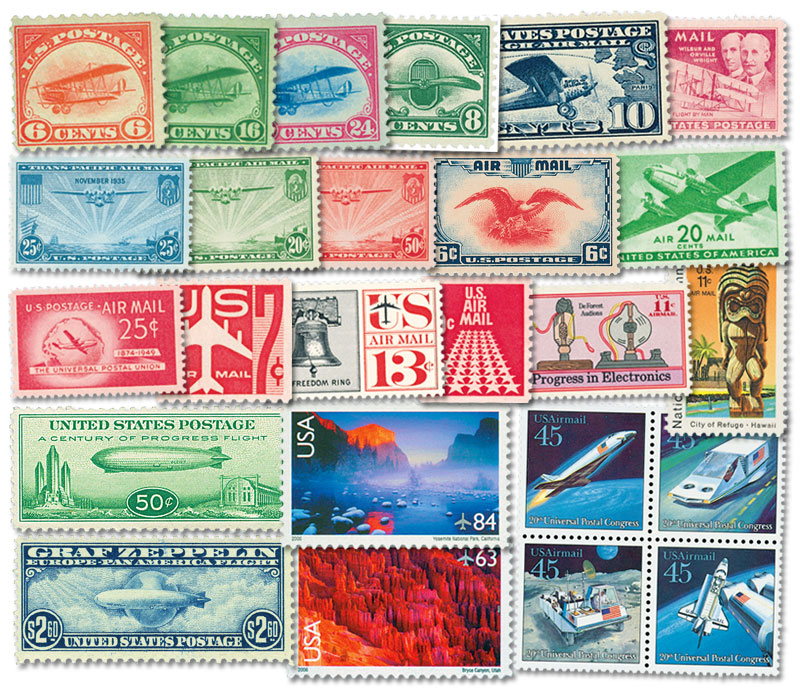
Stinson’s airmail flight beat the previous distance record set by Ruth Law in 1916. It also bested her own previous endurance record from the previous year. Stinson had to wait eight days for replacement propellers to complete her flight, which she finally did on May 31. Later that year, Stinson would become the first female pilot to deliver airmail in Canada.
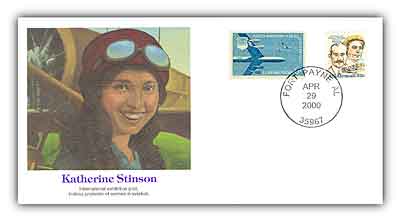
Though she had been unable to fly for the military during World War I, Stinson was accepted as an ambulance driver. Unfortunately, the cold weather and poor wartime conditions took a toll on her health. After she returned to the United States, Stinson was struck with tuberculosis and needed a less active profession, leading her to retire from flying in 1920. She went on to work as an architect in Santa Fe, New Mexico, before her death on July 8, 1977.
2017 47c Love Skywriting
There are two types of skywriting: traditional and skytyping. Both forms feed paraffin oil through the plane’s exhaust to create a trail of white smoke. In traditional skywriting, the release of oil is controlled by a switch in the plane’s cockpit. For skytyping, a computer controls when the smoke is released.
Traditional skywriting requires a specially trained pilot. They create a detailed flight plan with the letters written in reverse. Each maneuver is precisely timed so the message is legible on the ground. Skytyping is faster and easier, but less elegant. Five planes fly in parallel lines, releasing puffs of smoke to form the message. Unlike traditional skywriting, skytyping consists of broken dots instead of solid lines.
Today, people stop in their tracks to watch skywriters at work. Whether it be a simple advertisement, personal message, or even a marriage proposal, skywriting is a rare and awe-inspiring art form. It brings joy and wonder to all who witness it and lends a little magic to the everyday.
Printed by: Banknote Corporation of America
Method: Offset, Microprint
Self-Adhesive
First Commissioned Female Airmail Pilot

On May 23, 1918, Katherine Stinson became the first woman hired by the post office to deliver airmail in the US.
Born February 14, 1891, in Fort Payne, Alabama, Katherine’s family played an important role in early aviation. Her brother Eddie was an airplane manufacturer and her family ran a flight school.
In 1912, at the age of 21, Stinson became just the fourth woman in the country to earn her pilot’s license. The following year she became the first woman to carry the US mail when she dropped mailbags over the Montana State Fair. Her sister Marjorie also flew an early experimental airmail route in Texas in 1915, for which she is sometimes considered the first female airmail pilot.

Katherine Stinson became known as the “Flying Schoolgirl” and earned widespread attention for her daring aviation feats, earning up to $500 per appearance. In 1915, she became the first woman to perform a loop and created the “Dippy Twist Loop,” a loop with a snap roll at the top. Stinson also performed tricks at night, using flares attached to her plane’s wingtips. She was the first person, man or woman, to fly at night and the first to perform night skywriting.

Stinson tried to serve as a combat pilot during World War I, but was denied. Instead, she helped train pilots at her family’s school and flew fundraising tours for the American Red Cross. On December 11, 1917, Stinson set the American non-stop distance record, flying 606 miles from San Diego to San Francisco. She also set a Canadian distance and endurance record.
In 1918, Stinson became the first woman commissioned by the US post office to carry airmail. (Previous flights were experimental or not officially sanctioned). On May 23, she departed Chicago and flew 783 miles in 10 hours before landing in Binghamton, New York. She had hoped to make the complete flight to New York City that day to break the world’s nonstop distance record. However, she had to stop in Binghamton for fuel. Unfortunately, the field she had landed in was very muddy, making it hard to make a smooth landing and the plane toppled, smashing the propeller and damaging a wing. Although she was disappointed, she had still accomplished a major feat.

Stinson’s airmail flight beat the previous distance record set by Ruth Law in 1916. It also bested her own previous endurance record from the previous year. Stinson had to wait eight days for replacement propellers to complete her flight, which she finally did on May 31. Later that year, Stinson would become the first female pilot to deliver airmail in Canada.

Though she had been unable to fly for the military during World War I, Stinson was accepted as an ambulance driver. Unfortunately, the cold weather and poor wartime conditions took a toll on her health. After she returned to the United States, Stinson was struck with tuberculosis and needed a less active profession, leading her to retire from flying in 1920. She went on to work as an architect in Santa Fe, New Mexico, before her death on July 8, 1977.










